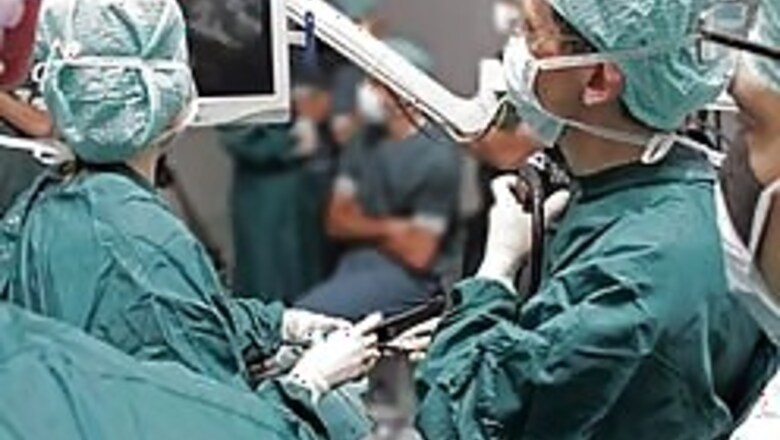
views
Amsterdam (Netherlands): Doctors at a Dutch hospital performed a new kind of surgery on Friday to correct heartburn without making any external incisions, using a tube that runs down a patient's throat and into the stomach.
Almost everybody has heartburn occasionally, but only one in 1,000 people suffers frequently or seriously enough from the problem, also known as acid reflux, for doctors to recommend surgery.
A team of two surgeons and two stomach specialists at the University of Maastricht's Medical Hospital used a tube, miniature camera and newly developed robotic tools to perform the surgery. It involves cinching up part of the stomach's lining to fashion a valve at the end of the oesophagus.
"For people who have serious acid reflux, this valve has deteriorated or doesn't work well enough," said surgeon Ronald van Dam. "The new valve is just small enough to pass food without problems," he added.
The technique and equipment used in Maastricht was developed by a private company based in Seattle, Washington, EndoGastric Solutions, Inc.
The procedure has previously been tested in two sets of 20 European patients, but Friday's surgeries were the first in commercial use. The procedure will be introduced in 30 hospitals around Europe this year.
In the most common technique currently used, doctors also use miniature cameras, but work through tiny incisions in the belly. They wrap the walls of the stomach around both sides of the oesophagus.
Chief of the Gastrointestinal Department, Montefiore Medical Centre, New York, Dr Larry Brandt, said the established procedure was a fine surgery but a less invasive approach would be better and is likely to emerge during the next several years.
However, he said it was far from certain that the technique used in Maastricht will become the new standard.
"This is an exciting area for development. What's not clear right now is which of the different approaches, and there are several, is going to win out," said Brandt.
Brandt also said that parallel methods under development for repairing the oesophagus valve from the inside include thickening it by injections, or by causing it to scar, as well as various techniques of stapling it or suturing it from the inside, as in Maastricht. It is not yet clear which is the best, he added.




















Comments
0 comment